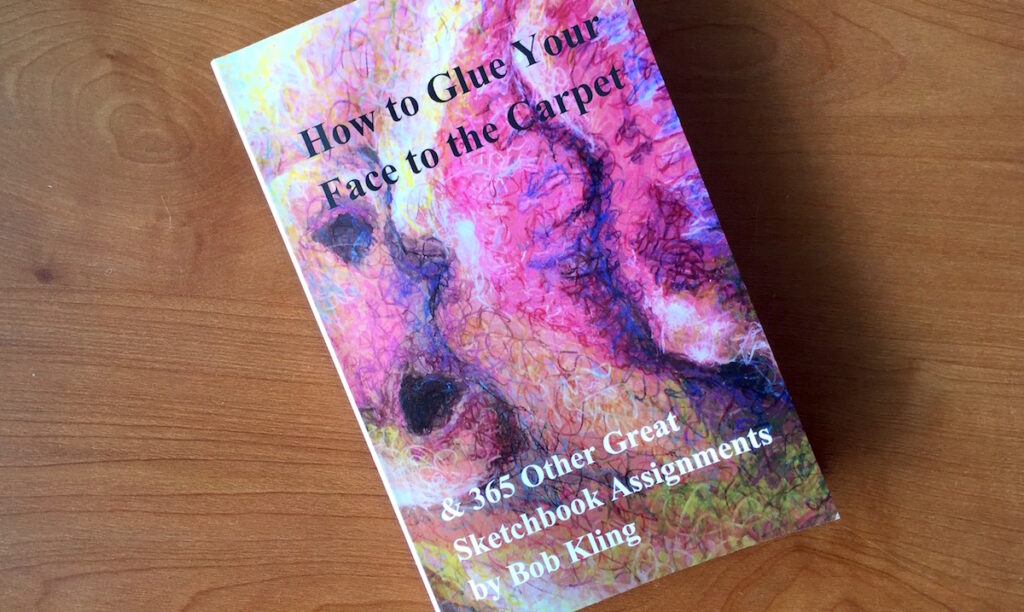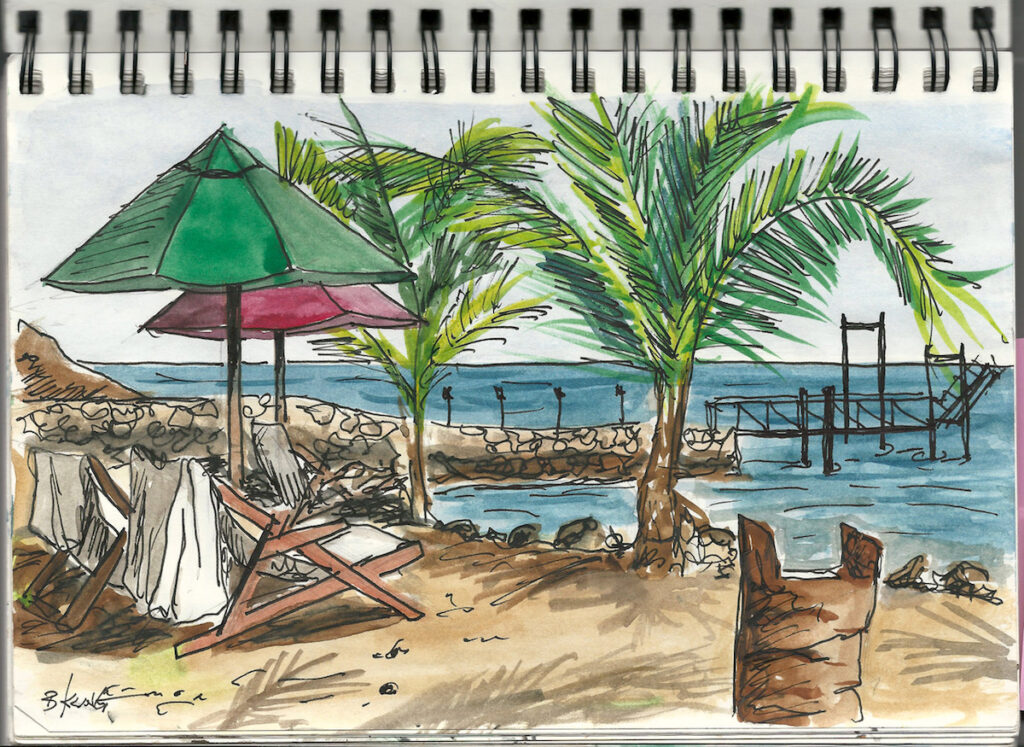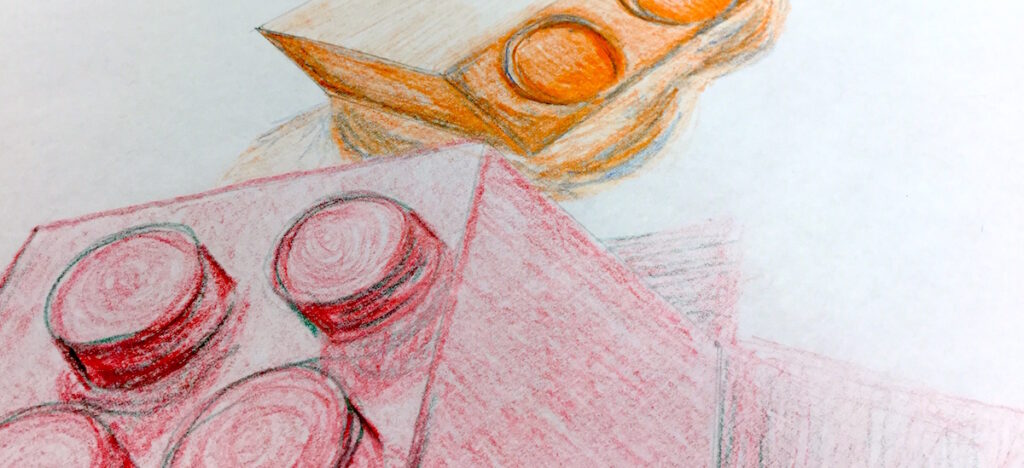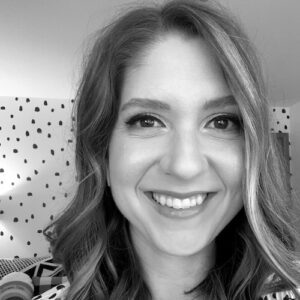As adults, we’re well aware of the benefits of sketchbooks. They’re the ideal place for planning artwork, taking notes, practicing sketching, and trying out new techniques. Trying to convince students of these benefits, however, is a different story. It seems like no matter how much we hype up the sketchbook, working in one is initially met with resistance.
According to AOE Content Director, Tim Bogatz, “The hardest part about using sketchbooks in the art room is convincing kids they’re worthwhile. You need to show them the process, how to use them, and the benefits of doing so. It takes a while.” In other words, you can’t just hand out blank books at the beginning of the grading period and expect students to use them.
One thing you can do to jumpstart your students’ love of sketchbooks is to craft great sketchbook prompts.
 I recently had the chance to talk to somewhat of a sketchbook expert, Bob Kling. Bob spent over thirty years teaching high school in Iowa before landing at his current position overseeing the art education major at Simpson College where he’s been for the last 13 years. Bob also exhibits his own work throughout the U.S. He told me, “I am a painter first but also a potter, sculptor, photographer, and writer. I believe drawing is the basis for all the visual arts. Therefore, a sketchbook is one of my most important tools.”
I recently had the chance to talk to somewhat of a sketchbook expert, Bob Kling. Bob spent over thirty years teaching high school in Iowa before landing at his current position overseeing the art education major at Simpson College where he’s been for the last 13 years. Bob also exhibits his own work throughout the U.S. He told me, “I am a painter first but also a potter, sculptor, photographer, and writer. I believe drawing is the basis for all the visual arts. Therefore, a sketchbook is one of my most important tools.”
Bob just published a book titled How to Glue Your Face to the Carpet and 365 Other Great Sketchbook Assignments. Says Bob, “I wanted the title to draw interest and since I believe in drawing daily, I kept the list of ideas to 366, including leap year.”

If you’re looking for new ideas for yourself or your students, this resource is definitely worth a look.
Bob made the book small and portable so you can use it on the go. In addition, he wanted to make people feel at ease when using it. According to Bob, “In my book, I even put in pre-stained, torn and folded pages to encourage doodling. Sometimes the naked white space of a new piece of paper can be intimidating. Your sketchbook should be both a journey and a playground.”
This book has so many ideas. Mixed in with more traditional prompts like, “Draw something that is reflective” are tons of wildly creative ideas.
Here’s just a small sampling of the engaging prompts you’ll find inside:
- Age old face – Draw your self-portrait as you will look at age 75.
- Your car in action – Make a flipbook of your car traveling.
- Shhhh – Draw what you hear.
- Teacher vision – Sketch what you would see if you had eyes in the back of your head.
- It’s alive! – Your backpack is alive! Draw it!

According to Bob, the key to creating a great prompt is to make it fun and easy to remember.
For example, instead of prompting students with, “Do a contour line drawing,” Bob would suggest, “ ‘Where, oh, where is my underwear?’ Dump your laundry in a pile. Do a contour drawing of your laundry.”
In both cases, the students will be working on the same skill, but you’ll get a much better result with the latter.
Bob also believes it’s important to keep a running list so you can jot down great ideas as they occur because students need those prompts to get their creativity flowing. He told me, “I am constantly thinking of new assignments or collecting them from other teachers and students. Beginning art students always want the freedom of ‘artist’s choice’ for an assignment and then struggle to figure out what to draw. That’s why it’s important to give them ideas with limitations. It’s within these limitations that creativity flourishes.”
Once you get your students invested in their sketchbooks, there are so many ways you can use them in the classroom.
In Bob’s teaching practice, sketchbooks are always homework. He told me, “I want art students to get in the habit of sketching daily, and not just in class.” He also wants their sketchbooks to be used in a variety of ways, “…not just for drawing beautiful things, but as a visual journal, an idea book to develop ideas, create new things and not be afraid of how the end result turns out.” In other words, he says, “When making art, I want my students to work hard, learn, and have fun – and not necessarily in that order!”
AOE Adjunct Instructor, Jennifer Borel, uses them a bit differently. In her middle school classroom, she has implemented something called “Sketchbook Thursdays.” Every Thursday, students stop whatever project they’re working on and sketch for a whole class period. She told me, “I love ‘Sketchbook Thursday’ because it breaks up projects that are taking awhile to get through. It improves their drawing skills. We typically have music on and I don’t let the students chat on sketchbooks days. They are more focused and produce some amazing things this way.”

AOE Content Director, Tim Bogatz, and AOE Writer, Melissa Purtee, use sketchbooks at the high school level as a place for students to brainstorm, plan, and test out ideas for artwork. In art history, Melissa even has her students use their sketchbooks as visual journals. There are so many possibilities! Says Tim, “Sketchbooks are perfect for assessment, both summative and formative. They also work to develop creativity. Plus, if students have a sketchbook, they always have something to work on!”
Bob told me, “Throughout all of my teaching, I have always believed sketchbook assignments are critical for students to get them to see and to think.” No matter how you use sketchbooks in your classroom, creating engaging prompts for students is essential to get them invested in the practice. Take it from Bob and infuse a little humor in your attempts. You might just be surprised with the results!
How do you get students invested in their sketchbook practice?
How else do you use sketchbooks in your classroom?
Magazine articles and podcasts are opinions of professional education contributors and do not necessarily represent the position of the Art of Education University (AOEU) or its academic offerings. Contributors use terms in the way they are most often talked about in the scope of their educational experiences.





